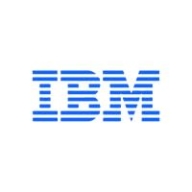

IBM Application Performance Management and AWS Auto Scaling compete in monitoring and infrastructure scalability. IBM has a stronger foothold in performance metrics, while AWS Auto Scaling is advantageous for scalability.
Features: IBM Application Performance Management includes comprehensive monitoring tools, detailed analytics, and real-time performance tracking. AWS Auto Scaling offers seamless scalability, integration within the AWS ecosystem, and automated resource management.
Room for Improvement: IBM Application Performance Management needs better integration with non-IBM products, more intuitive configuration options, and a simplified user interface. AWS Auto Scaling requires improved compatibility with hybrid and on-premise environments, more granular control options, and enhanced reporting capabilities.
Ease of Deployment and Customer Service: IBM Application Performance Management has a complex setup but provides strong customer support. AWS Auto Scaling is easier to deploy but has mixed reviews regarding customer support.
Pricing and ROI: IBM Application Performance Management has higher initial setup costs but is seen as providing significant ROI through its monitoring capabilities. AWS Auto Scaling offers a more attractive pricing structure, particularly cost-efficient for dynamic workloads.
| Product | Market Share (%) |
|---|---|
| AWS Auto Scaling | 0.3% |
| IBM Application Performance Management | 0.5% |
| Other | 99.2% |


| Company Size | Count |
|---|---|
| Small Business | 11 |
| Midsize Enterprise | 2 |
| Large Enterprise | 11 |
| Company Size | Count |
|---|---|
| Small Business | 6 |
| Midsize Enterprise | 1 |
| Large Enterprise | 2 |
AWS Auto Scaling monitors your applications and automatically adjusts capacity to maintain steady, predictable performance at the lowest possible cost. Using AWS Auto Scaling, it’s easy to setup application scaling for multiple resources across multiple services in minutes. The service provides a simple, powerful user interface that lets you build scaling plans for resources including Amazon EC2 instances and Spot Fleets, Amazon ECS tasks, Amazon DynamoDB tables and indexes, and Amazon Aurora Replicas. AWS Auto Scaling makes scaling simple with recommendations that allow you to optimize performance, costs, or balance between them. If you’re already using Amazon EC2 Auto Scaling to dynamically scale your Amazon EC2 instances, you can now combine it with AWS Auto Scaling to scale additional resources for other AWS services. With AWS Auto Scaling, your applications always have the right resources at the right time.
We monitor all Application Performance Monitoring (APM) and Observability reviews to prevent fraudulent reviews and keep review quality high. We do not post reviews by company employees or direct competitors. We validate each review for authenticity via cross-reference with LinkedIn, and personal follow-up with the reviewer when necessary.